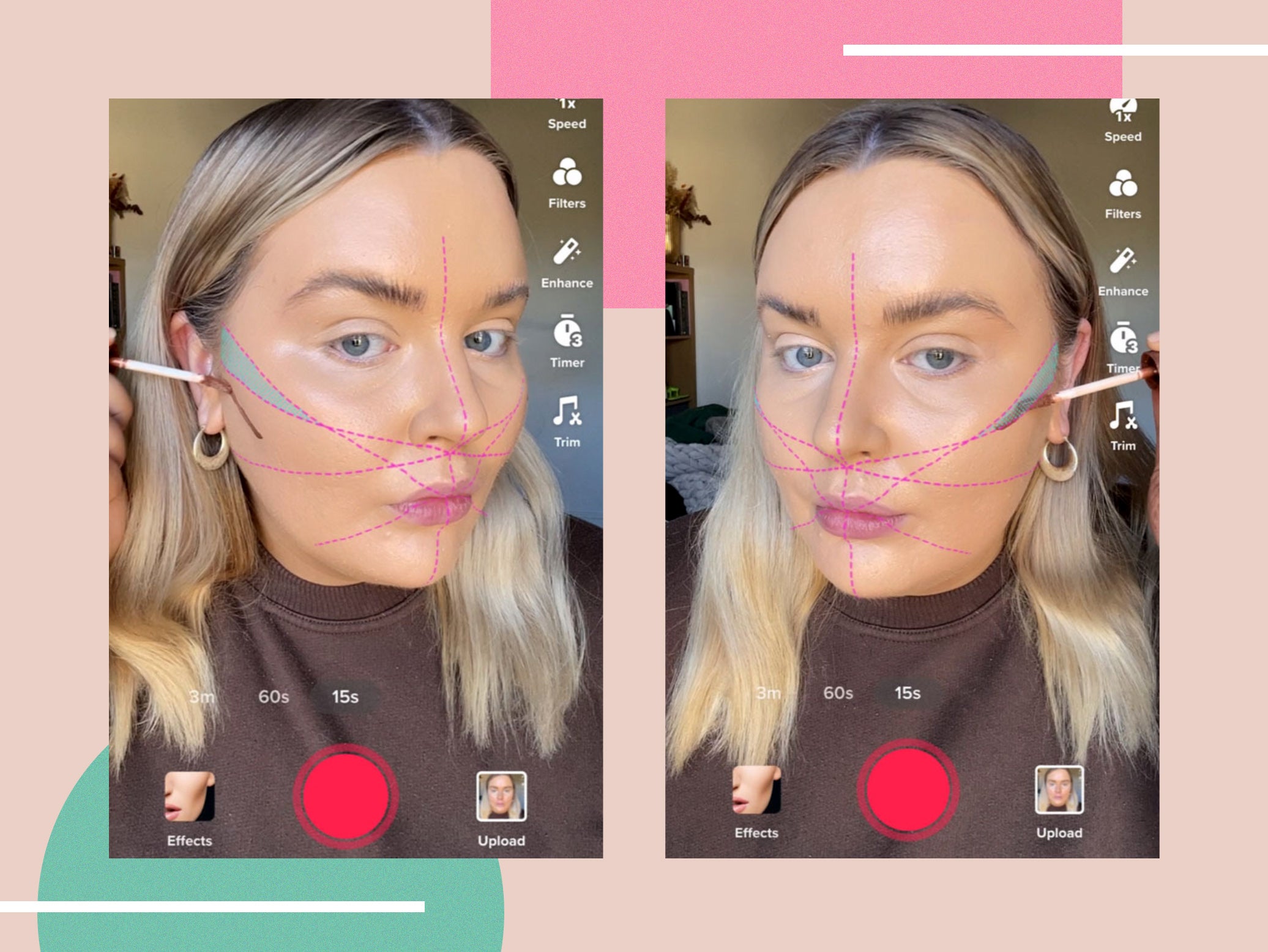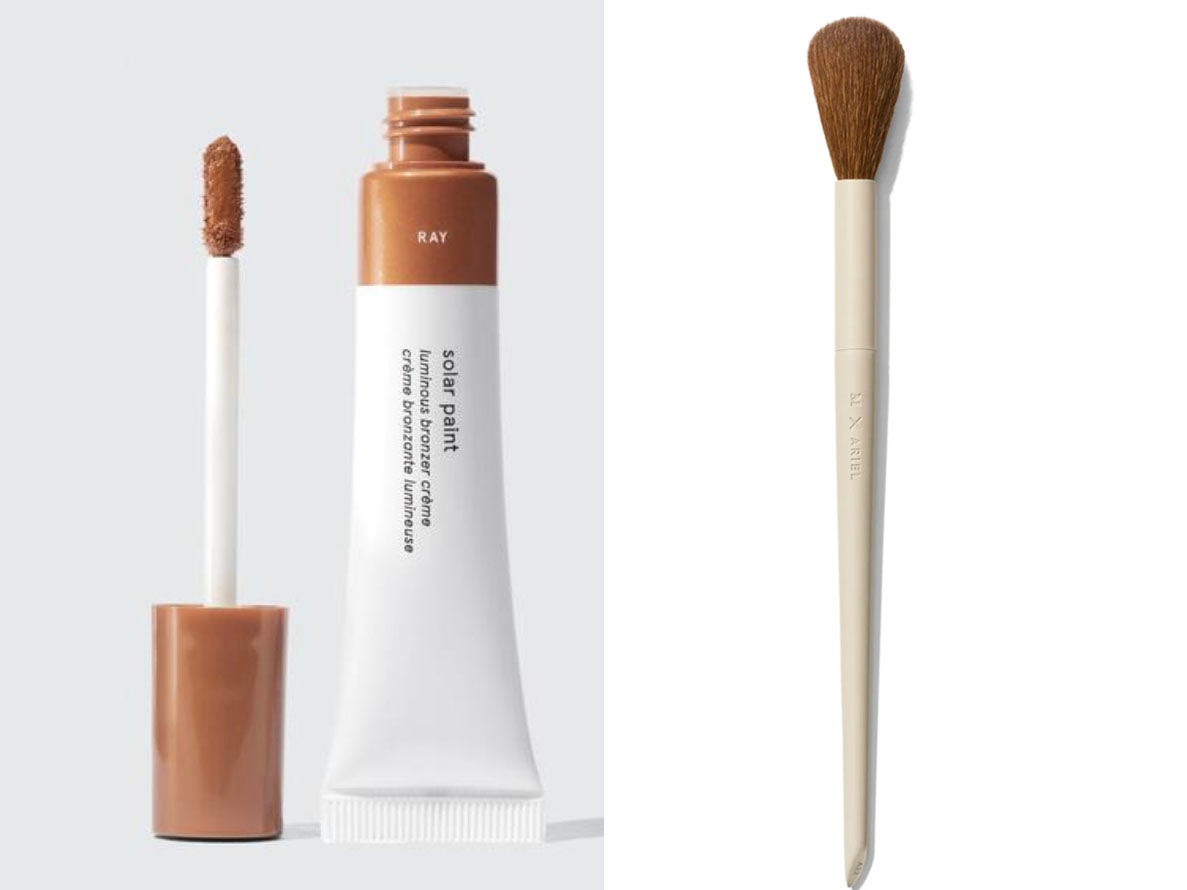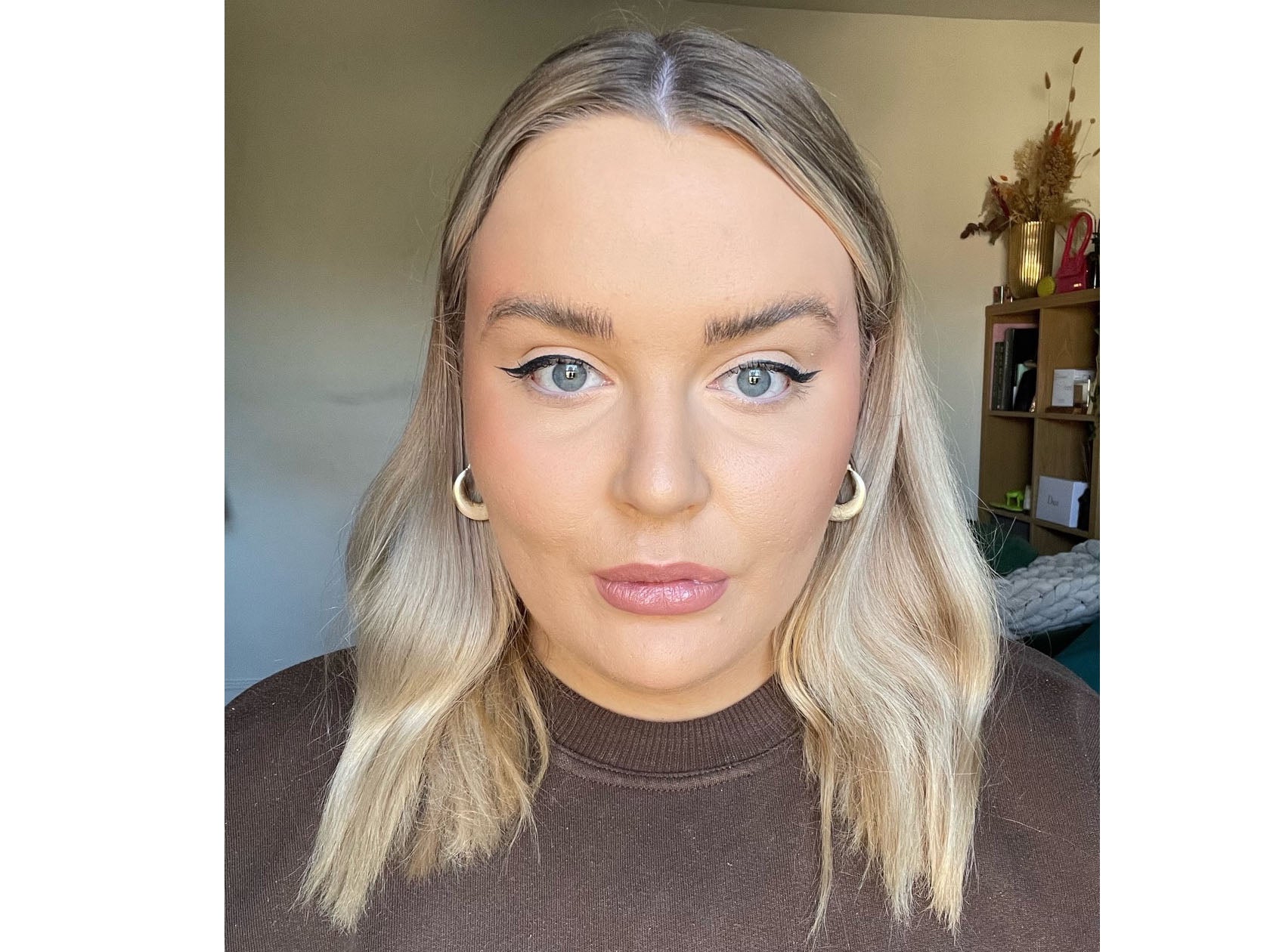The Independent's journalism is supported by our readers. When you purchase through links on our site, we may earn commission. Why trust us?
TikTok trials: We try the viral beauty filter that claims to transform the way you contour
In our latest series, we investigate whether the hottest trends and products on the app really deliver

Your support helps us to tell the story
From reproductive rights to climate change to Big Tech, The Independent is on the ground when the story is developing. Whether it's investigating the financials of Elon Musk's pro-Trump PAC or producing our latest documentary, 'The A Word', which shines a light on the American women fighting for reproductive rights, we know how important it is to parse out the facts from the messaging.
At such a critical moment in US history, we need reporters on the ground. Your donation allows us to keep sending journalists to speak to both sides of the story.
The Independent is trusted by Americans across the entire political spectrum. And unlike many other quality news outlets, we choose not to lock Americans out of our reporting and analysis with paywalls. We believe quality journalism should be available to everyone, paid for by those who can afford it.
Your support makes all the difference.TikTok is home to a whole manner of beauty hacks, some good, some downright bad. Viral trends on platform include everything from slugging, a K-beauty skincare method that encourages you to lather your skin in Vaseline before you sleep, to using a root cover-up spray on your face to feign the look of freckles (you can imagine how that one’s been going).
The latest hack that’s got TikTok users in a spin? A beauty filter that maps out where you should contour according to your face shape. The filter, created by @gracemchoi, analyses your proportions and identifies the perfect placement for your contour, highlighting where to apply via small blue triangles that hover over on your cheeks. No doubt Mark Zuckerberg will try and create one for Instagram next.
The technology is based on the “golden ratio”, a set of proportions that are found in nature, design and in the human form. Dr Marquardt, a former surgeon, applied this formula to measure facial beauty in his research. Using one formula as a universal indicator of attractiveness sounds problematic to me, but outside of that, the TikTok feature essentially weighs up your proportions to ensure symmetry and, when it comes to contour, lift and elevate your face.
While the contour hack is Grace’s viral latest filter, she originally created a brow version using the same method, showing people where to fill in and how to shape their brows. Some TikTok users were so entranced by the power of this filter that they actually shaved off the ends of their eyebrows to achieve the exact look that was suggested.
This time round, the suggested placement for contour has left beauty buffs stunned, as the filter suggests a far higher application than most of us are used to, focusing on the top of the cheekbones rather than the hollows of the cheeks. After seeing this filter crop up time and time again on my FYP, and as someone who is quite frankly obsessed with the power of contouring, I had to give it a whirl.
Read more:
In our debut series, TikTok Made Me Try It, we’ll be on the hunt for the latest buzz products, hacks and tools, putting them to the test to see if they really live up to the hype. While exploring whether this beauty filter actually sculpted my face to high heavens, I’ll be sharing my favourite products to contour with too.
As a shopping editor who trials hundreds of products a year, you may be surprised to hear that my favourite liquid bronzer hasn’t left my make-up bag since I started using it. Read on to find out whether this beauty hack actually delivers, and what products I used to achieve the final look.
How we tested
I used the TikTok filter when applying my contour, allowing it to dictate the placement of my liquid bronzer before buffing it in with my normal brush. On one half of my face, I applied contour using the TikTok method, but on the other I stuck to my normal method, applying it on the hollows of my cheekbone. I judged the filter’s success on its ability to lift my face and the difference between both placements when it comes to sculpting.
The method and products to use
When you bring the filter up on TikTok, it adds lines across your face and shapes to indicate where to apply the product. The blue triangles signal the space you should fill with contour, while the line going across the centre of your nose indicates the perfect place to apply highlight (I apply this to the bridge of my nose and to the tip). The lines move as you move your face, so the contour area will be in proportion throughout application.
To contour, I used my holy grail cream product, Glossier’s solar paint (£17, Glossier.com). I’ve been obsessed with these little wonder sticks since I reviewed them last summer and they’ve remained my go-to for effortless bronzing and contouring and landed the best buy spot in my review of the best bronzers. The gel-like formula blends like a dream and is easily buildable, while the colour pay-off is natural-looking thanks to a very subtle shimmer that runs through the formula. The doe-foot wand applicator is perfect for this method as it gives you extra precision.

To blend this, I use the A22 blush brush from Morphe’s collaboration with celebrity make-up artist Ariel Tejada. It’s fluffy enough to give you the perfect blend with hardly any effort, but tapered enough to help with precise placement – the perfect harmony for contouring. Unfortunately this brush only comes in a set (£80.75, Boots.com), but we love the whole collection if you’re looking for new face and eye brushes.
So, back to the TikTok filter. The suggested placement for the contour is far higher than anything I’ve ever tried and felt very unnatural to apply. As I have quite pronounced cheeks (read, chipmunk cheeks) I was concerned that this high placement would accentuate their fullness rather than carve out the hollows of my bone structure. Alas, keen to give it a fair shot, I applied where suggested, following the geometrical lines and hoping for a transformation. On the other side of my face, I then applied the contour where I usually would, on the hollow of my cheekbone to add shadow and definition
The results
The TikTok method left my contour so high that it was practically sitting where I’d usually apply my cream blush, which made me uneasy. However, other women had shown amazing before and after results using the filter, so I had high hopes. Unfortunately, when comparing both methods, I didn’t see a significant difference between the two, but my face does look ever-so-slightly more lifted on the TikTok side. I think my lack of results may be due to my face structure, proving that the formula doesn’t work magic on all face shapes.

When you think about contouring and highlighting, it’s purely about playing around with where the light would naturally hit your face, and where shadows would fall according to your bone structure. Accentuating the hollows of my cheeks gives me more definition and in turn lifts the apples of my cheeks, applying the contour on the tops of my cheeks only worked to emphasise an area that wouldn’t naturally have shadow. This defies the supposed rules of the filter, but as mentioned, others have seen major success with this TikTok method, ending up a far more lifted look with this higher placement.
The verdict: TikTok contour filter
All in all, I won’t be changing my contour regime off the back of trying this filter, but it was fun to experiment with different techniques and helped me understand that everyone’s face shape and proportions are completely different. If you’re going to use the brow version of the filter to hack off some hairs, be warned: results may vary.